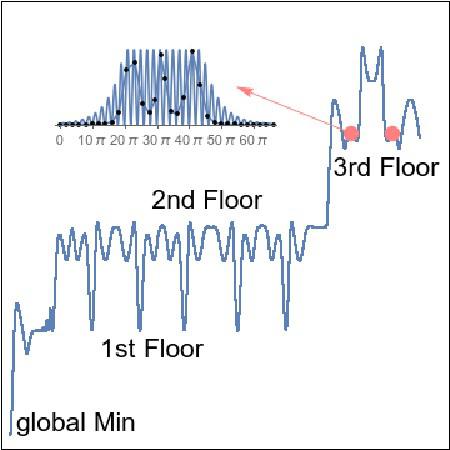The European Physical Journal B ( IF 1.6 ) Pub Date : 2020-12-07 , DOI: 10.1140/epjb/e2020-10421-x Wolfgang Quapp , Jui-Yin Lin , Josep Maria Bofill

|
Abstract
We propose a Frenkel-Kontorova model for a 1D chain of electrons forming a Wigner solid over 4He. It is a highly idealized picture, but with the model at hand we can study the movement of the chain. We find out that the energetically most preferable movement is the successive sliding of a kink or an antikink through the chain. Then the force for a movement does not depend on the length of the chain. The force uniformly applied to all electrons must be larger than a force exciting only a kink or an antikink. We calculate two cases, one with stiff ‘springs’ between the electrons and one with weak ‘springs’. The side potential of the ‘dimples’ is additionally damped at the periphery. We study the cases with 33, 66, and 101 particles.
Graphical abstract
中文翻译:

修正的Frenkel-Kontorova模型解释了一维维格纳固体的运动
摘要
我们为形成超过4 He的维格纳固体的一维电子链提出了Frenkel-Kontorova模型。这是一张高度理想化的图片,但是通过手头的模型,我们可以研究链的运动。我们发现,能量上最可取的运动是纽结或抗纽结在链中的连续滑动。那么,运动的力并不取决于链条的长度。均匀施加于所有电子的力必须大于仅激发扭结或反扭结的力。我们计算了两种情况,一种情况是电子之间具有刚性的“弹簧”,另一种情况是具有较弱的“弹簧”。“凹痕”的侧电位在外围处另外被阻尼。我们研究了33、66和101个粒子的情况。











































 京公网安备 11010802027423号
京公网安备 11010802027423号